Hitting A Six: Cricket is a complex and exciting sport with a variety of ways to score runs. One of the most thrilling moments in any cricket match is when a batsman hits the ball over the boundary for a six. This iconic shot is not only exciting for the crowd but also adds significant value to the team’s score. However, the rules surrounding how hitting a six works can sometimes be misunderstood, especially for newcomers to the game.
Hitting A Six: In this article, we’ll break down the concept of hitting a six, explain the scoring mechanics, and explore the different scenarios where this rule applies in cricket. We’ll also cover the implications of a six for both the batting side and the bowling side.
What Is A Six In Cricket?
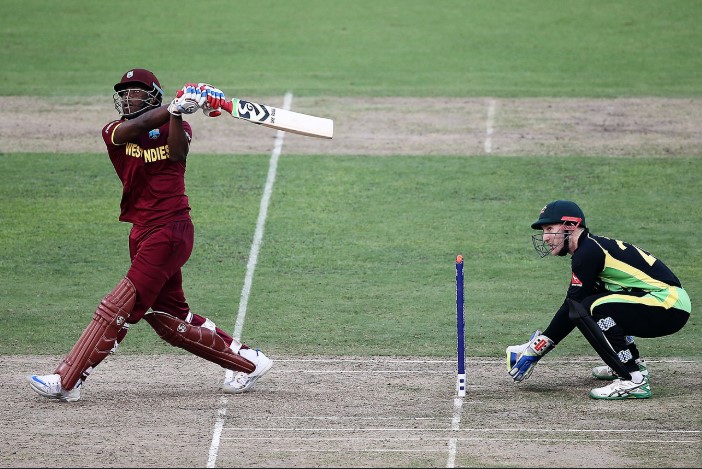
Hitting A Six: A six is a shot where the ball is hit by the batsman over the boundary line without the ball touching the ground. The boundary is typically marked by a rope or a fence that runs along the perimeter of the field. When the ball crosses this boundary, the batsman is awarded six runs. Importantly, this is a form of boundary scoring, which also includes a four (for when the ball crosses the boundary but touches the ground first).
For a shot to be considered a six:
- The ball must be hit from the batsman’s bat and not from the glove or any other part of the body.
- The ball must cross the boundary line in the air, not bouncing inside the boundary before crossing it.
How A Six Is Scored
Hitting A Six: In cricket, scoring runs involves hitting the ball and running between the wickets, or hitting the ball to the boundary. A six is one of the fastest ways to score runs. When the batsman hits the ball over the boundary, the umpire signals a six by raising both arms above their head.
The key distinction between a four and a six is the ball’s contact with the ground:
- Four: If the ball hits the ground before crossing the boundary, it is awarded four runs.
- Six: If the ball crosses the boundary in the air without touching the ground, it is awarded six runs.
Example of a Six:
- A batsman hits the ball cleanly over the bowler’s head, and it flies over the boundary line without touching the ground. The umpire signals six runs for that shot.
- If the ball lands just inside the boundary line and then rolls over, the shot is scored as a four.
Impact On The Match
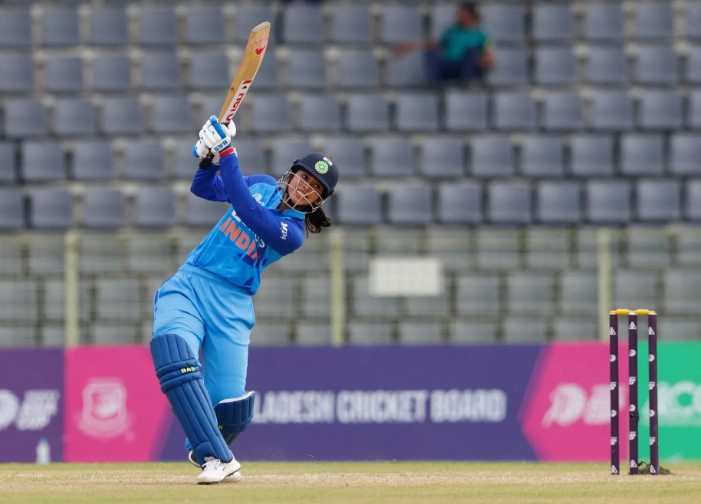
Hitting A Six: The scoring of a six in cricket is a significant achievement, both for the batsman and the team. Not only does it add to the total runs, but it can also shift momentum in the match. A batsman hitting a six often lifts the spirits of the team and excites the crowd, while for the bowlers, conceding sixes can be frustrating.
Key Points About Scoring A Six:
Runs awarded: A six automatically adds 6 runs to the team’s total.
No running required: The batsman does not need to run between the wickets if a six is hit.
Frequent in T20 and ODI formats: Sixes are more common in limited-overs formats (T20 and One Day Internationals) due to the aggressive nature of these games. In Test cricket, sixes are less frequent because batsmen tend to play more cautiously in longer formats.
Different Scenarios For A Six In Cricket
Hitting A Six: There are various scenarios in which a batsman might hit a six, and they can differ based on the type of shot played. Some of these shots include:
1. The Lofted Drive
Hitting A Six: The lofted drive is a classic shot where the batsman aims to drive the ball with a full swing and lofts it over the boundary line. This shot is often used to clear the infield and send the ball over the ropes.
2. The Pull Shot
Hitting A Six: A pull shot is typically played to a short-pitched delivery, and the batsman strikes the ball with power, sending it over the boundary at a height. This is a common shot for hitting sixes when a bowler delivers a bouncer.
3. The Cut Shot
Hitting A Six: In some cases, especially on the off-side, a batsman might cut the ball with a lot of force, sending it over the boundary. The cut shot for a six is often seen on the back foot when the ball is wide and short.
4. The Sweep or Reverse Sweep
The sweep shot, played against spin bowling, can sometimes lead to a six, especially when the batsman gets under the ball and hits it cleanly. In modern cricket, the reverse sweep has also become a popular technique for hitting sixes.
5. The Hook Shot
A hook shot is played against bouncers, where the batsman hooks the ball into the air, typically over the square leg region. This shot often results in a six if timed well.
Sixes In Different Formats Of Cricket
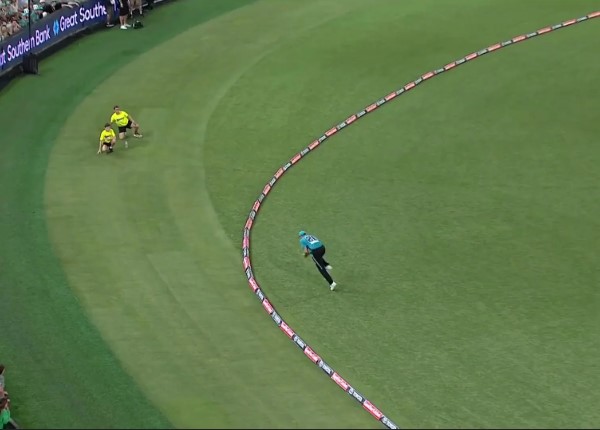
The frequency of sixes varies significantly between different formats of cricket. Here’s how sixes are distributed across Test cricket, One Day Internationals (ODIs), and Twenty20 (T20) cricket:
| Format | Frequency of Sixes | Typical Length of Match | Key Players for Sixes |
|---|---|---|---|
| Test Cricket | Rare, typically 2-5 per team | 5 days (up to 90 overs per day) | Aggressive players like Chris Gayle, Ben Stokes |
| ODI Cricket | Moderate, 5-10 per team | 50 overs per team | Hard hitters like MS Dhoni, Shahid Afridi |
| T20 Cricket | Frequent, 10-20 per team | 20 overs per team | Power hitters like Jos Buttler, Andre Russell |
Test Cricket: In Test matches, batsmen are more conservative, so sixes are rare. However, when the situation calls for it, aggressive players can clear the ropes.
ODI Cricket: In One Day Internationals, scoring sixes is more common due to the 50-over format, allowing more opportunity for aggressive batting. Batsmen like MS Dhoni, Adam Gilchrist, and Shahid Afridi have been known for their ability to hit sixes consistently in ODIs.
T20 Cricket: The Twenty20 format is where sixes are most frequent. With only 20 overs per side, players tend to be more aggressive, targeting the boundary more often. Players like Chris Gayle and Andre Russell are renowned for their six-hitting ability in T20 cricket.
Strategies For Hitting Sixes
Hitting a six requires a combination of power, timing, and technique. Here are some strategies and tips for batsmen looking to increase their six-hitting ability:
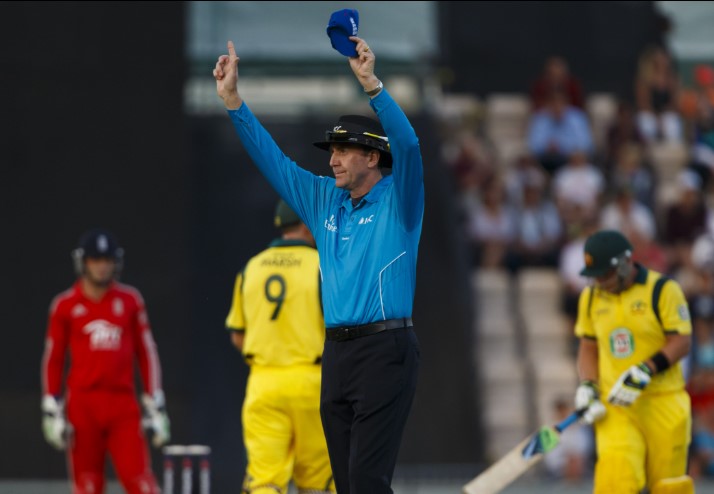
Timing and Placement: Hitting the ball cleanly with the right timing is more important than sheer power. A perfectly timed shot can clear the boundary even without much force behind it.
Positioning: For most sixes, batsmen need to get into position to hit the ball in the air. Proper footwork and balance are key to making this happen.
Watch the Bowler: Observing the bowler’s length and line can help batsmen predict when to go for a six. For instance, a bouncer might prompt a hook shot, while a full delivery could invite a lofted drive.
Practice: As with any cricket skill, hitting sixes requires practice. Batsmen who regularly practice their lofted shots, cut shots, and drives are better equipped to hit sixes during matches.
The Significance Of Sixes In Cricket
Sixes are not just about scoring runs—they also play a psychological role in a match:
Momentum: A well-timed six can change the momentum of the game, especially if the batting side is struggling.
Pressure on Bowlers: Conceding a six can be demoralizing for bowlers and add pressure to their performance. Bowlers are often more careful after a six to avoid giving away more boundaries.
Entertainment Value: For the crowd and viewers, hitting a six is one of the most entertaining aspects of cricket. It adds excitement and flair to the game.
A six in cricket is one of the most thrilling and valuable ways to score runs. When a batsman sends the ball flying over the boundary, it adds six runs to the team’s score, without the need for running. Understanding how a six works in cricket is essential for appreciating the game, especially in limited-overs formats like T20 and ODIs, where sixes play a crucial role in determining the outcome of matches.
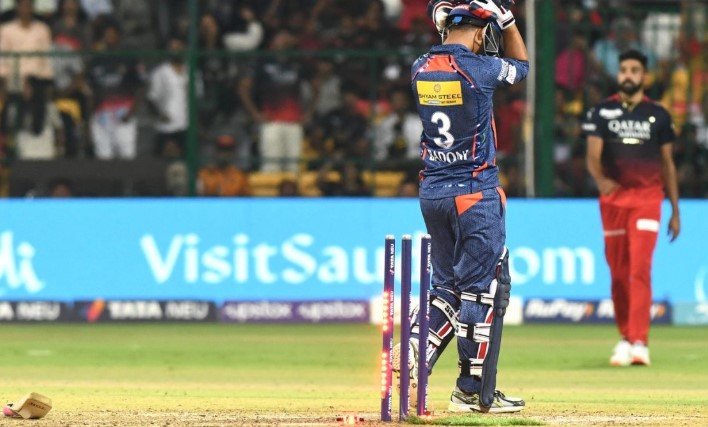
From aggressive drives to well-timed pull shots, sixes can come in many forms. Whether it’s a slow and steady Test match or a fast-paced T20 encounter, hitting a six remains one of cricket’s most exciting moments. For both players and fans, watching a six sail over the boundary line is one of the most exhilarating sights in the game.
